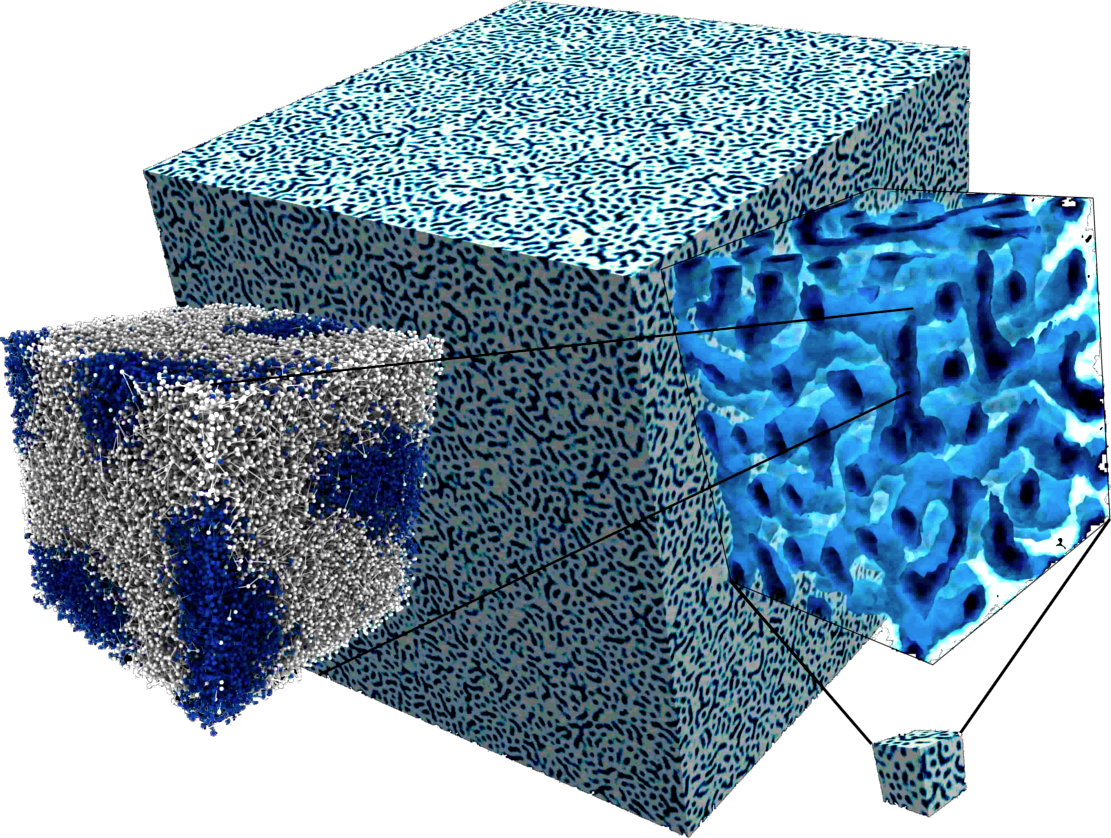Block Copolymers
Ludwig Schneider / September 2021 (176 Words, 1 Minutes)
Block Copolymers for Functional Nano Materials
The self-assembly of block copolymers allows access to the nanometer scale by controlling the chemistry of the polymeric blocks. Understanding the formation, processing, and properties of the resulting morphologies is a challenge with many open questions. The materials have to be tailored for each of the possible applications: battery electrolytes, molecular membranes, or optical meta-materials.
Battery Electrolytes
Battery electrolytes require two major properties: i) ion-conductivity and ii) mechanical stability. Diblock copolymer materials offer the opportunity to provide each property with one of the two blocks. The chemistry of each block can be optimized to excel in its job.

However, the morphology needs to be bicontinuous to provide their functions macroscopically to the bulk, which is at odds with the equilibrium phase diagram. I investigate kinetically trapped morphologies for their suitability for this application on engineering length scales up to micrometers with simulations of billions of particles - only possible via HPC GPU simulation with my software SOMA.
Morphology Modification via Shear Flow
Spinodal decomposition of symmetric diblock copolymers rarely results in the equilibrium lamellae phase. For applications, it may, however, be essential to achieve macroscopic alignment. In collaboration with my experimental colleagues, we investigate which orientations are stable and the transition mechanisms of the lamellae under shear flow.
Confinement can be an interesting factor to order microphase separation. In this example, I talk about symmetric diblock copolymers in cylindrical confinement for a poster presentation at APS 2022.
Back to the Top